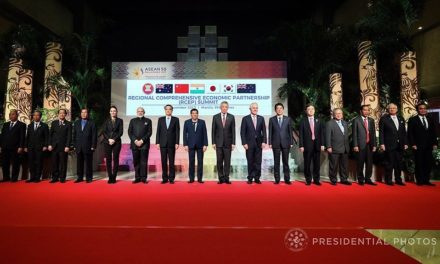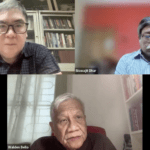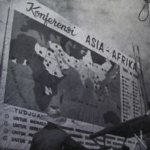by Walden Bello*
In the middle of August, the Thai government announced a number of initiatives that many observers have interpreted as a marked departure from the International Monetary Fund’s (IMF) usual prescriptions to stabilise the economy. Together, they constitute “a Keynesian approach, although a weak one,” as Chulalongkorn University economist Pasuk Phongphaichit puts it.
The measures were 1) government deficit spending amounting to 3 per cent of GDP in the coming fiscal year; 2) a government-led bailout of local banks; and 3) revision of the country’s foreign investment regime to allow 100 per cent or majority ownership in key sectors of the economy.
How did this package emerge? Has the balance of power, in fact, shifted from the IMF to the Thai government?
The place to start answering these questions is early this year, when the Chuan government was winning Washington’s praise as an exemplary student of the IMF–one that would, as a result, emerge from recession sooner than the other troubled Asian tigers. The IMF formula followed by the Fund consisted of high interest rates to stabilise the Thai baht;
keeping the reins on government spending; and recapitalizing Thailand’s shattered banks along lines of infusing them with foreign capital by loosening the restrictions on foreign investment in the financial sector.
As the year wore on, however, it became clear that the program was killing the Thai patient. The high interest rates and the lid on government spending had so weakened the private sector that the IMF had to revise its estimate of 1998 GDP growth from 2.5 per cent in August 1997 to 0.6 per cent in December 1997 to -3.5 per cent in February 1998. By May,
economists were talking about a 7-8 per cent contraction.
At the same time, the recapitalization via foreign capital infusions was proving to be a dud, with only two of the country’s biggest banks, Bangkok Bank and Thai Farmers’ Bank, managing to attract significant amounts of foreign funds. The problem was the high level of non-performing loans (NPL) which came to 30-35 per cent of the banks’ exposure. Foreign
banks that were circling overhead in search of bargains did not relish having to digest such a massive liability together with their prey.
Time was running out for the country’s “non-functioning financial system,” as Finance Minister Tarrin Nimmanahaeminda described it. And, as Nation writers Thanong Khantong and Vatchara Charoonsantikul point out, a collective shudder gripped the local business community when in June, the head of Bangkok Bank, the country’s biggest gave an interview saying that his bank would go bankrupt if its stock of NPLs would hit 30-40 per cent.
It is hard to see, however, the government being galvanised into action without the strong pressures from NGOs and numerous sectors of Thai society, including most of the business community, urging it to break with the IMF. Also catalytic, according to Pasuk, was the role of a forum of expatriate businessmen and residents convoked by the Nation newspaper in July, wherein the vast majority of participants urged the government to part with the Fund and embark on an expansionary policy.
But that was only one part of the equation. The other part was the massive chorus of criticism of Fund that had built up around the world for bailing out international private banks, bungling the Indonesian “rescue” by provoking a bank run last November, and prescribing the wrong medicine – that is, forcing a tight fiscal policy meant to cure public sector profligacy to address a problem caused by private sector over-borrowing. With the US Congress withholding $14.5 billion meant to fund a US quota increase – which was the key to releasing $67 billion in new funds from other rich countries – the IMF simply could not afford another disaster in Asia.
The softening in the IMF stance was evident at the public relations level, when Anoop Singh, the deputy chief for the Asia Pacific region, replaced his boss Hubert Neiss as the main negotiator with the government and the face of the Fund to the Thai public. An Indian with a sympathetic smile, Singh was effusive in public in his support for the “difficult situation” faced by the Thai authorities, a manner that contrasted with the Austrian Neiss’ “Dr. IMF” personality.
In the discussions leading up to Thailand’s fifth letter of intent — which would release another $494 million of $17.2 billion bailout package arranged by the IMF in August 1997 — the Thais, led by Finance Minister Tarrin took the initiative to push a Keynesian program on IMF officials whose moral reserves to defend the orthodox line were rapidly dwindling. And they succeeded to some extent.
The first component of the revised program, which would allow the Thais to run a deficit amounting to 3 per cent of GDP, would result, according to Tarrin, in 250 billion baht (about $6 billion) being injected “directly into the system [to] address the social safety net problem.” In other situations, at other times, getting an organisation whose name has become synonymous with “budget surplus” to agree to a deficit of this size would have been extremely difficult.
The second component is a comprehensive financial reform package that would pump in 300 billion baht or $7.2 billion of government money raised through bond issues into the banks to recapitalize them in return for equity and a say in management. With the government directly controlling six banks and 12 finance companies, this latest move amounted to a “creeping” nationalisation of the whole banking system. Nationalisation – be it formal, de facto, or creeping – is, of course, anathema in Fund orthodoxy, especially when the specifics of the eventual withdrawal of the government from the banks are not spelled out clearly.
The third component dealt with foreign investment and reflected the Thai authorities’ and the Fund’s consensus that foreign capital is still the key to recovery. The government rescinded a 26-year-old executive decree that restricted foreign investments and opened up 33 new businesses to 100 per cent or majority foreign ownership. Foreign investors were also allowed to participate in “reserved businesses” as majority shareholders.
There was, of course, no shortage of local critics of the revised program. Many see the moves toward nationalisation as amounting to the state bailing out the rich. Which is true and which raises the interesting question: Can there be a way devised to jumpstart the financial system while penalising the financial elite that brought it to its knees?
But the most telling criticism was that it was all too little and too late. To some economists, reviving the economy and saving people from the misery of the unemployment engulfing the country would require deficit spending on the order of at least 6 per cent of GDP. As Kanjana Spindler, a columnist at the Bangkok Post put it, the financial sector might have
been temporarily bailed out, but “the real sector, that part of the economy which most of us live in, continues its downward spiral with no light at the end of the tunnel-except that of the oncoming train.”
And the IMF? With Panglossian panache, Anil Singh asserted that the package brought Thailand to the threshold of recovery,” conveniently omitting any act of contrition for his agency’s having helped bring Thailand to such dire straits.
* Dr. Walden Bello is co-director of Focus on the Global South and a professor of sociology and public administration at the University of the Philippines. He is the principal author of A Siamese Tragedy: Development and Disintegration in Modern Thailand (London: Zed Press, 1998).







